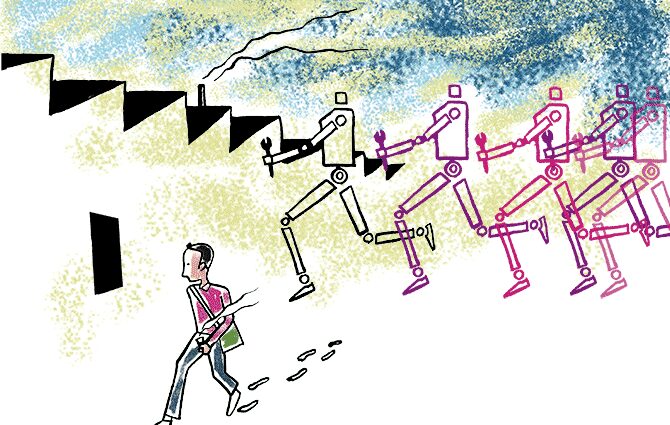India’s progress on digital inclusion stalled in 2022 with no change in mobile internet use for either men or women, the latest mobile gender gap report, published by global mobile industry association GSMA shows.
Released on Wednesday, the report shows that 81 per cent of men and 72 per cent of women in India owned a mobile phone as of 2022, translating to a gender gap of 11 per cent.
The numbers drop steeply in terms of mobile internet adoption.
While 52 per cent of Indian men use mobile internet, women are way behind, with only 31 per cent of them accessing mobile internet, the report pointed out.
The resulting effective gender gap is 40 per cent, higher than neighbouring Pakistan’s 38 per cent.
The gap is 43 per cent in Bangladesh.
There were 627.5 million mobile phone connections in urban areas, and 516.4 million rural ones as of March 31, latest data from the Telecom Regulatory Authority of India (Trai) shows.
This adds up to a total of 1.14 billion cellular connections.
The United Nations estimated India’s population to be roughly 1.42 billion in March.
GSMA represents more than 750 mobile operators and 400 companies in the telecom ecosystem.
“This is likely a result of supply chain disruptions since the onset of the pandemic, a slowing economy and increased inflation, among other factors, which have made accessing the internet less affordable and accessible for people in India in general, but especially for women,” it said.
The gender gap in mobile internet use in South Asia, and across Low and Middle-Income countries (LMICs) overall, is largely driven by India, which has seen significant changes in its mobile internet gender gap over the past few years.
“Between 2018 and 2020, the gender gap had been narrowing due to changing market dynamics, more affordable handsets and a notable increase in women’s adoption during the onset of COVID-19 restrictions and lockdowns,” the report noted.
The gap dropped from 56 per cent to 33 per cent over this time.
But the numbers rose to 41 per cent in 2021.
However, in 2021, this trend reversed when men’s adoption of mobile internet increased while women’s remained unchanged.
As of 2022, only 19 per cent of female mobile internet users in India are accessing it on someone else’s device compared to 8 per cent of men.
Long way off
Overall, 900 million women across LMICs still aren’t connected to mobile broadband, of which two-thirds live in South Asia and Sub-Saharan Africa.
If this large gap remains unchanged, current forecasts suggest that only 360 million more women are expected to start using mobile broadband by the end of the decade, the report said.
This will be less than half of the 800 million target.
“Mobile phones are the primary, and often only, source of internet access in LMICs, particularly in rural communities, so it’s alarming to see women’s digital inclusion slow for the second year in a row,” said Mats Granryd, director general, GSMA.
The organisation pointed out that once women own a smartphone, their awareness and use of mobile internet is almost on par with men.
Despite this, women are 17 per cent less likely than men to own a smartphone in LMICs, translating into around 250 million fewer women than men.
There are still 440 million women across LMICs who do not own a mobile phone and are difficult to reach.
Source: Read Full Article


